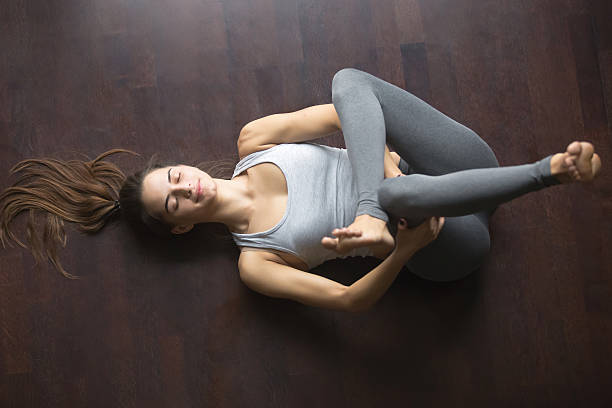- What are Minimalist Workouts and Why are They Beneficial for Beginners?
- How to Design a Minimalist Workout Routine that Suits Your Goals and Fitness Level
- What are Some Examples of Minimalist Exercises that You Can Do at Home or Anywhere?
- How to Track Your Progress and Adjust Your Minimalist Workout Plan as You Improve
- Tips to Help You Stay Motivated and Consistent with Your Minimalist Workouts
- Frequently Asked Questions about Minimalist Workouts
- Conclusion
Do you want to start exercising but feel overwhelmed by the complexity and cost of traditional fitness routines? Do you struggle to find the time or motivation to go to the gym or use fancy equipment? Do you wish there was a simpler and more effective way to get fit and healthy?
If you answered yes to any of these questions, then minimalist workouts might be the perfect solution for you. Minimalist workouts are exercises that require little or no equipment, can be done anywhere and anytime, and can deliver great results in a short amount of time.
In this article, you will learn what minimalist workouts are, why they are beneficial for beginners, how to design a minimalist workout routine that suits your goals and fitness level, what are some examples of minimalist exercises that you can do at home or anywhere, how to track your progress and adjust your minimalist workout plan as you improve, and what are some tips and resources to help you stay motivated and consistent with your minimalist workouts.
By the end of this article, you will have everything you need to start a minimalist fitness routine and enjoy the benefits of a simpler and more effective approach to fitness.
What are Minimalist Workouts and Why are They Beneficial for Beginners?
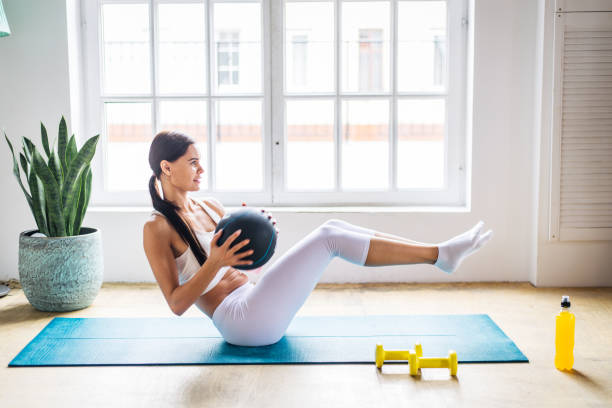
Minimalist workouts are exercises that use minimal or no equipment, focus on the basic movements that involve multiple muscle groups, and can be done in a short amount of time. Some examples of minimalist workouts are bodyweight exercises, calisthenics, HIIT (high-intensity interval training), circuit training, and yoga.
Minimalist workouts are beneficial for beginners for several reasons:
Time-efficient
Minimalist workouts can be done in as little as 15-30 minutes, which is ideal for busy people who don’t have a lot of time to spare for exercise. You can also fit them into your schedule whenever you have a free window, whether it’s in the morning, during lunch break, or before bed.
Equipment-free
Minimalist workouts don’t require expensive gym memberships or equipment, which can save you money and hassle. You can use your own body weight, or improvise with household items, such as chairs, bottles, or books, to add resistance and challenge to your exercises.
Flexible
Minimalist workouts can be done anywhere, anytime, whether it’s at home, in the park, in the hotel room, or on the beach. You don’t need a lot of space or a specific environment to do them. You can also modify them to suit your preferences, goals, and fitness level, by changing the number of repetitions, sets, intensity, or duration of your exercises.
Effective
Minimalist workouts can build strength, improve fitness, and promote overall health, by working on your cardiovascular, muscular, and skeletal systems. They can also help you burn calories, lose weight, and tone your body, by increasing your metabolism and activating your fat-burning hormones. They can also improve your posture, balance, coordination, and flexibility, by enhancing your core stability and joint mobility.
Easy to learn
Minimalist workouts require minimal instruction and can be adapted to different fitness levels. You don’t need to learn complicated techniques or follow strict rules to do them. You can start with the basic exercises that are easy to perform and progress to more advanced ones as you get stronger and fitter.
As you can see, minimalist workouts are a great way to start exercising and reap the benefits of physical activity, without spending a lot of time, money, or effort. They are also fun and enjoyable, as you can experiment with different exercises and challenge yourself in different ways.
How to Design a Minimalist Workout Routine that Suits Your Goals and Fitness Level
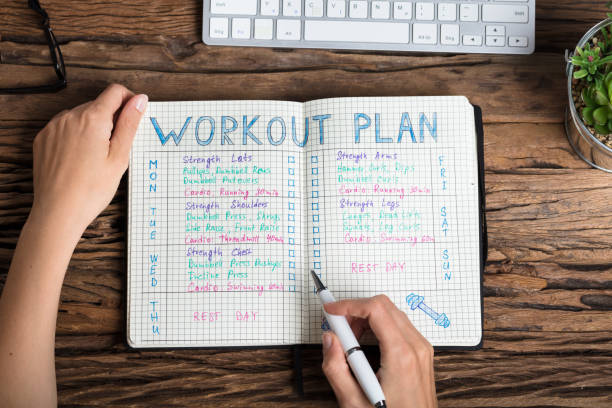
One of the advantages of minimalist workouts is that they are customizable and adaptable to your individual needs and preferences. You can design your own minimalist workout routine that suits your goals and fitness level, by following these simple steps:
Step 1: Define your goal
What do you want to achieve with your minimalist workouts? Do you want to lose weight, build muscle, improve your endurance, or just stay healthy? Your goal will determine the type, intensity, and frequency of your exercises.
Step 2: Choose your exercises
Based on your goal, choose the exercises that will target the muscle groups and energy systems that you want to work on. For example, if you want to lose weight, you can choose exercises that burn a lot of calories, such as burpees, mountain climbers, or jumping jacks.
If you want to build muscle, you can choose exercises that challenge your strength, such as push-ups, squats, or lunges. If you want to improve your endurance, you can choose exercises that increase your heart rate, such as running, skipping, or cycling.
Step 3: Plan your workout structure
Based on your goal and exercises, plan how you will structure your workout. How many exercises will you do? How many repetitions and sets will you perform? How long will you rest between exercises and sets? How often will you do your workout?
A common minimalist workout structure is circuit training, which involves doing a series of exercises back to back, with minimal rest between them, and repeating the circuit for a number of rounds.
For example, you can do a circuit of 10 push-ups, 10 squats, 10 lunges, and 10 planks, resting for 30 seconds between exercises and 1-2 minutes between rounds, and repeating the circuit 2-3 times.
Step 4: Adjust your workout intensity
Based on your fitness level and progress, adjust the intensity of your workout to make it more or less challenging. You can increase the intensity by increasing the number of repetitions, sets, or rounds, decreasing the rest time, adding weight or resistance, or doing more difficult variations of the exercises.
You can decrease the intensity by doing the opposite. The key is to find the optimal intensity that challenges you but does not overwhelm you.
By following these steps, you can design your own minimalist workout routine that suits your goals and fitness level, and that you can easily modify as you improve.
You can also use some of the examples of minimalist workout plans that we will provide later in this article, or find more online or in apps. The important thing is to find a minimalist workout routine that works for you and that you enjoy doing.
What are Some Examples of Minimalist Exercises that You Can Do at Home or Anywhere?
There are many minimalist exercises that you can do at home or anywhere, with little or no equipment, that can work your whole body and improve your fitness. Here are some examples of minimalist exercises that you can try, along with their benefits and instructions:
Push-ups
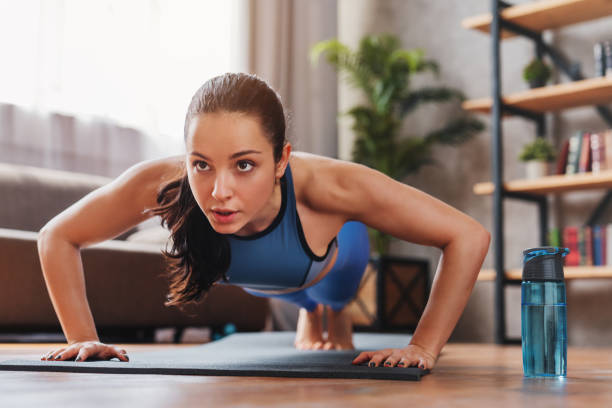
Push-ups are one of the best minimalist exercises that can strengthen your chest, shoulders, triceps, and core muscles. They can also improve your posture and prevent back pain.
To do a push-up, start in a plank position, with your hands slightly wider than your shoulders, your feet together, and your body in a straight line.
Bend your elbows and lower your chest until it is close to the floor, then push yourself back up to the starting position. Keep your core tight and your neck neutral throughout the movement.
If you find it too hard, you can modify the push-up by placing your knees on the floor, or by elevating your hands on a chair or a wall.
Squats
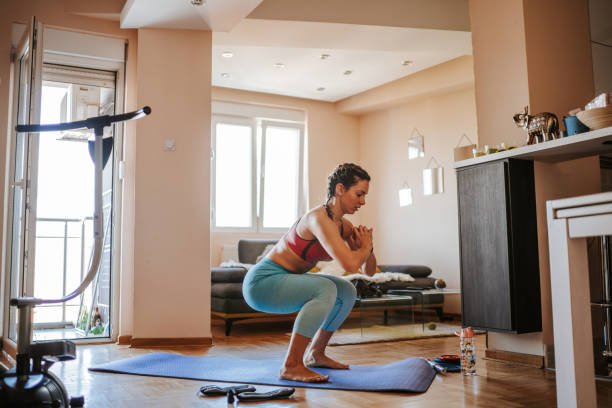
Squats are another great minimalist exercise that can work your legs, glutes, and core muscles. They can also improve your balance, mobility, and joint health.
To do a squat, stand with your feet shoulder-width apart, your toes slightly turned out, and your arms by your sides. Push your hips back and bend your knees, as if you are sitting on a chair until your thighs are parallel to the floor. Keep your chest up, your back straight, and your knees in line with your toes.
Then, drive through your heels and stand up to the starting position. Squeeze your glutes at the top of the movement. If you want to make it harder, you can hold a weight in front of your chest, or jump up at the end of the squat.
Lunges
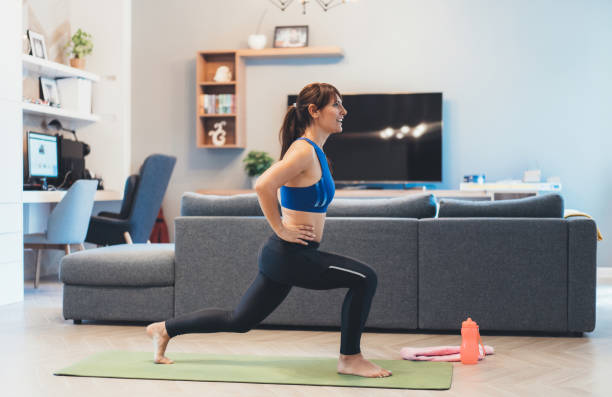
Lunges are another effective minimalist exercise that can target your legs, glutes, and core muscles. They can also enhance your stability, coordination, and flexibility.
To do a lunge, start with your feet hip-width apart, your hands on your hips, and your shoulders back. Take a big step forward with your right foot, and lower your body until your right thigh is parallel to the floor and your left knee is close to the ground.
Make sure your right knee does not go past your right toe, and your torso is upright. Then, push off your right foot and return to the starting position. Repeat with your left foot and alternate legs. If you want to make it harder, you can hold a weight in each hand, or do a reverse lunge, where you step back instead of forward.
Plank
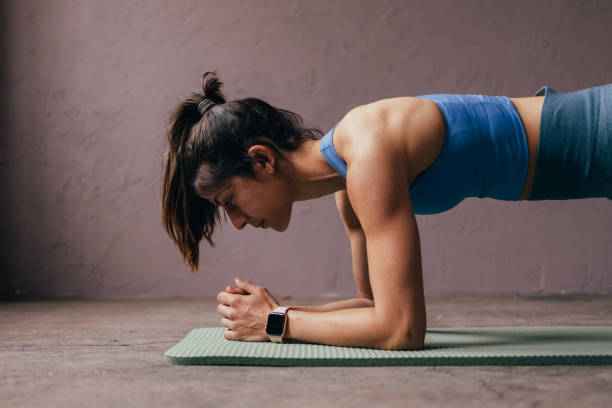
Plank is a minimalist exercise that can work your entire core, as well as your shoulders, arms, and back. It can also improve your posture, alignment, and endurance.
To do a plank, start in a push-up position, with your hands directly under your shoulders, your feet together, and your body in a straight line. Engage your core and squeeze your glutes, and hold this position for as long as you can, without letting your hips sag or your back arch.
Keep your head in line with your spine, and breathe normally. If you find it too hard, you can modify the plank by placing your elbows on the floor, or by placing your knees on the floor. If you want to make it harder, you can lift one arm or one leg, or move your hips side to side.
Read Also:
Diet Plan For Weight Loss At Home: How To Eat Healthy And Stay Fit
How To Lose Weight Without Counting Calories
10 Best Pre-Workout Snacks To Fuel Your Fitness
Home Doctor Book: Your Ultimate Guide To Health Management
How to Track Your Progress and Adjust Your Minimalist Workout Plan as You Improve
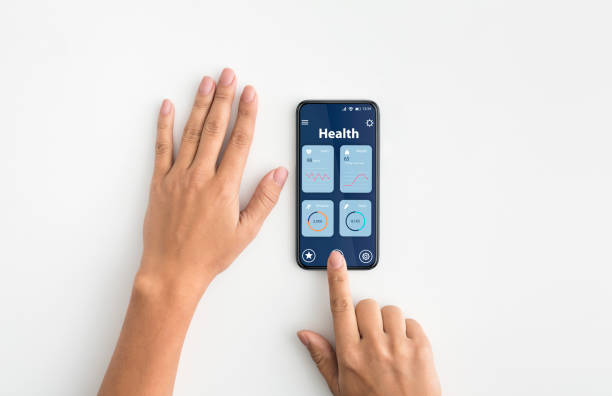
One of the challenges of minimalist workouts is that they can become boring or too easy over time, if you don’t track your progress and adjust your minimalist workout plan as you improve. Tracking your progress and adjusting your minimalist workout plan can help you stay motivated, challenged, and focused on your goal.
There are different ways to track your progress and adjust your minimalist workout plan, depending on your preference and goal. Here are some examples:
Track your time
One way to track your progress and adjust your minimalist workout plan is to measure how long it takes you to complete your workout, or how long you can hold a certain exercise, such as a plank.
You can use a stopwatch, a timer, or an app to record your time. Then, you can try to beat your previous time, or increase the duration of your exercise, as you get fitter and stronger.
For example, if you can do a circuit of 10 push-ups, 10 squats, 10 lunges, and 10 planks in 10 minutes, you can try to do it in 9 minutes, or increase the number of repetitions or sets, the next time you do it.
Track your reps
Another way to track your progress and adjust your minimalist workout plan is to count how many repetitions you can do of a certain exercise, or how many rounds you can do of a certain circuit, in a given time.
You can use a counter, a notebook, or an app to record your reps. Then, you can try to increase your reps, or decrease the time, as you get fitter and stronger. For example, if you can do 10 push-ups in 30 seconds, you can try to do 11 push-ups, or do it in 29 seconds, the next time you do it.
Track your weight
Another way to track your progress and adjust your minimalist workout plan is to weigh yourself regularly, and see how your weight changes over time. You can use a scale, a tape measure, or an app to record your weight.
Then, you can adjust your minimalist workout plan accordingly, by increasing or decreasing the intensity, frequency, or duration of your exercises, depending on your goal.
For example, if you want to lose weight, and you see that your weight is not changing, you can increase the intensity, frequency, or duration of your exercises, or change your diet, to create a bigger calorie deficit.
If you want to gain weight, and you see that your weight is not changing, you can decrease the intensity, frequency, or duration of your exercises, or change your diet, to create a bigger calorie surplus.
By tracking your progress and adjusting your minimalist workout plan, you can ensure that you are always moving forward and reaching your goal, while keeping your minimalist workouts fun and challenging.
Also, You can use some of the tools and resources that we will provide later in this article, or find more online or in apps, to help you track your progress and adjust your minimalist workout plan.
The important thing is to find a method that works for you and that you can stick to.
Tips to Help You Stay Motivated and Consistent with Your Minimalist Workouts

One of the challenges of minimalist workouts is that they can become monotonous or uninspiring over time, if you don’t have a way to stay motivated and consistent with your minimalist workouts.
Staying motivated and consistent with your minimalist workouts can help you enjoy the process, overcome the obstacles, and achieve your goal.
There are different tips and resources to help you stay motivated and consistent with your minimalist workouts, depending on your personality and preference. Here are some examples:
Find a workout buddy or join a fitness community
One of the best ways to stay motivated and consistent with your minimalist workouts is to find a workout buddy or join a fitness community that shares your interest and goal.
You can support each other, challenge each other, and hold each other accountable. You can also have fun and socialize while doing your minimalist workouts. You can find a workout buddy or join a fitness community online or offline, such as on social media, forums, blogs, apps, or local groups.
Make exercise enjoyable by choosing activities you like
Another way to stay motivated and consistent with your minimalist workouts is to make exercise enjoyable by choosing activities you like.
You don’t have to stick to the same exercises or routines all the time. You can mix and match different exercises and routines, or try new ones, that suit your mood, preference, and goal.
You can also add some music, podcasts, audiobooks, or videos to your minimalist workouts, to make them more entertaining and stimulating.
Set realistic and specific goals and track your progress
Another way to stay motivated and consistent with your minimalist workouts is to set realistic and specific goals and track your progress.
You can use the SMART criteria to set your goals, which means they should be Specific, Measurable, Achievable, Relevant, and Time-bound. For example, instead of saying “I want to get fit”, you can say “I want to do 20 push-ups, 20 squats, 20 lunges, and 20 plank in 15 minutes, by the end of the month”.
Then, you can use some of the methods we discussed earlier, or some of the tools and resources we will provide later, to track your progress and see how far you have come and how close you are to your goal.
Reward yourself and celebrate your achievements
Another way to stay motivated and consistent with your minimalist workouts is to reward yourself and celebrate your achievements. You can treat yourself to something you enjoy, such as a movie, a book, a massage, or a meal, every time you complete a workout, reach a milestone, or achieve a goal.
You can also share your achievements with your workout buddy, your fitness community, your friends, or your family, and receive positive feedback and encouragement.
Also, you can use some of the tools and resources we will provide later, to create badges, certificates, or trophies, to commemorate your achievements.
By following these tips and using these resources, you can stay motivated and consistent with your minimalist workouts, and make them a part of your lifestyle and habit.
Frequently Asked Questions about Minimalist Workouts
Q: How can I prevent injuries and soreness from minimalist workouts?
A: You can prevent injuries and soreness from minimalist workouts by following these tips:
1) Warm up before your workout, and cool down after your workout, by doing some light cardio and stretching exercises. This can help you prepare your muscles and joints for the exercise, and prevent stiffness and cramps.
2) Focus on proper form and technique, and avoid doing exercises that cause pain or discomfort. This can help you avoid injury and maximize your results.
3) Listen to your body and take rest days when needed. This can help you recover and repair your muscles and tissues, and prevent overtraining and burnout.
Q: How can I make minimalist workouts more fun and interesting?
A: You can make minimalist workouts more fun and interesting by following these tips:
1) Vary your exercises and routines, and try new ones, that suit your mood, preference, and goal. This can help you avoid boredom and plateaus, and challenge yourself in different ways.
2) Add some music, podcasts, audiobooks, or videos to your minimalist workouts, to make them more entertaining and stimulating. This can help you enjoy the process and distract you from the effort.
3) Set mini-challenges and rewards for yourself, such as doing a certain number of reps, sets, or rounds, or beating your previous time, or reaching a certain goal. This can help you stay motivated and focused, and celebrate your achievements.
Q: How can I combine minimalist workouts with other types of exercise?
A: You can combine minimalist workouts with other types of exercise, such as cardio, yoga, or sports, to create a balanced and comprehensive fitness program.
You can do this by following these tips:
1) Choose exercises that complement each other, and avoid doing exercises that conflict or overlap with each other. For example, you can do minimalist workouts on the days that you don’t do cardio, yoga, or sports, or you can do minimalist workouts before or after your cardio, yoga, or sports, depending on your goal and energy level.
2) Schedule your exercises and routines, and stick to your plan, but be flexible and adaptable to your circumstances. For example, you can plan to do minimalist workouts three times a week, and cardio, yoga, or sports two times a week, but you can adjust your plan if you have a busy week, or if you feel tired or sick.
3) Monitor your progress and results, and see how minimalist workouts and other types of exercise affect your fitness and health. For example, you can measure your weight, body fat, muscle mass, strength, endurance, flexibility, and mood, and see how they change over time, and how they correlate with your exercise frequency, intensity, and duration.
Conclusion
In this article, you have learned what minimalist workouts are, why they are beneficial for beginners, how to design a minimalist workout routine that suits your goals and fitness level, what are some examples of
minimalist exercises that you can do at home or anywhere, how to track your progress and adjust your minimalist workout plan as you improve, and what are some tips and resources to help you stay motivated and consistent with your minimalist workouts.
We hope that this article has inspired you and motivated you to start a minimalist fitness routine and enjoy the benefits of a simpler and more effective approach to fitness.
Remember, you don’t need a lot of time, money, or equipment to get fit and healthy. You just need a minimalist mindset, a minimalist workout plan, and a minimalist attitude.
Thank you for reading this article, and we wish you all the best with your minimalist workouts. 😊

